Scott Nash likes to call Maine the Land of Hidden Treasures. Wherever he looks, he finds a pot of gold in the form of an artist who lives in the woods or somewhere along the coast while maintaining an active career as an illustrator or author.
“If you’re willing to look, you’ll find them,” he said. “They’re everywhere.”
Nash and his wife and partner in art, Nancy Gibson Nash, are tapping Maine’s creative community with their latest project, an initiative they are calling the Illustration Institute. It’s a new Portland-based nonprofit arts organization dedicated to promoting the work of illustrators in Maine and elsewhere while also encouraging everyone to explore their own creativity by playing with art supplies. Tapping the expertise of the artists who make their living in illustration, the institute will offer workshops and other hands-on education activities designed to pique people’s curiosity about illustration.
“We just want to get people to play,” Scott Nash said. “We think play is a good thing.”
The Illustration Institute, or “ii” as Nash likes to call it, has its first big event on Saturday when it hosts Isleford writer and illustrator Ashley Bryan at the Portland Public Library. Bryan, 93, has written and illustrated more than 50 children’s books over many decades. His latest, “Freedom Over Me,” is a story about slaves and the lives they might have led had they been free of the shackles of slavery. It is based on slavery records that Bryan purchased at an estate auction in Maine several years ago. The book, released this fall, was nominated for a Kirkus Prize in children’s literature.
Bryan’s talk is in conjunction with the current exhibition at the Portland library, “Picture This …” on view through Dec. 17 and organized by the Illustration Institute. The exhibition includes the work of 18 illustrators, including nine from Maine. Among the Maine artists represented are Chris Van Dusen, Daniel Minter and Jamie Hogan.
It shows final work that the artists created, as well as storyboards, sketches and other materials they used to arrive at their illustrations. “We really want to show the process,” said Gibson Nash, a collage artist and illustrator who collected work from the artists to use in the show, then worked with students from Maine College of Art to build the displays. “It takes many strokes of an ink pen to get just the right line, lots of pencil sketches to get just the right expression in a face and hours of practice to make the final watercolor have the same energy that the first sketch had weeks ago. This sounds daunting, but it can also be inspiring to those who may want to become illustrators. If you put in the time, magical results can happen. We want to demystify illustration and help people realize what artists do to arrive at a final piece.”
Viewers see early notes and drawings to get a sense of what it might feel like looking over the artist’s shoulder at the drawing table, as well as perspective about how much work goes into a 32-page children’s book.
Scott Nash, who teaches illustration at Maine College of Art and has illustrated many books, has been thinking about this idea for a few years. He has been instrumental in bringing other illustration exhibitions to the Portland library. More than 55,000 people attended an exhibition of the art of Maurice Sendak at the library in 2013. Another 33,000 people showed up for an exhibition of work by Edward Gorey in 2012.
Most famously, Sendak wrote “Where the Wild Things Are.” Among other things, Gorey illustrated books in a macabre style.
The response to those exhibitions prompted him to think bigger and more broadly about the exhibitions. The Nashes hope to pack this exhibition to travel and send it to cities and states with concentrations of illustrators, like Maine. They’ve had conversations with friends in Boston, Philadelphia, Colorado and Oregon about hosting the exhibition after it leaves Portland, and they are working with libraries and art schools because those institutions lend themselves to instruction, workshops and community gatherings.
“Our mission is to increase appreciation and awareness of illustration by providing the public the opportunity to learn directly from master artists and working professionals through workshops, lectures and exhibitions about the art of illustration in libraries across the country,” Scott Nash said.
They received a $65,000 grant from the Bill an Patty Zimmerman Fund of the Maine Community Foundation, and a separate supporter has pledged a $15,000 matching grant. Among other things, they will use the money to pay for programs, the cost of shipping art and for a residency they hope to create for illustrators. They are lining up other workshops, which will be scheduled for 2017, Gibson Nash said.
A CAREER IN ILLUSTRATION
The works in “Picture This…” include children’s picture books, animation, cartoons and even tattoo art. The idea is to show people how illustration enhances their lives and how a career in illustration can mean different things to different people.
Children’s book illustrator Lizzy Rockwell of Connecticut, whose work is in the exhibition, should have come to an illustration career naturally. Her parents both made their living as book illustrators, and Rockwell earned her degree in art history at Connecticut College, where Nancy Gibson Nash was her roommate. But her degree only went so far.
“I was going to have to get a job. My parents watched me flounder for a summer after graduation, and my dad was like, ‘Don’t you want to be an illustrator?’ He thought I drew well,” she said.
She took continuing-ed classes to improve her skills and quickly began getting work. “I didn’t get a degree, but I got a portfolio,” she said.
Her career evolved from style and fashion illustrations to educational books and eventually children’s books. She finished a book for her father after he died, and she now collaborates routinely with her mother. She’s written and illustrated nearly two dozen books.
“The beautiful thing about illustration, everyone has a story to tell,” Rockwell said. “Everybody was an illustrator when they were a child. It’s one of the most accessible forms of expression. You don’t have to take a workshop because you want to change your career. You should take a workshop so you can create a personal narrative of what’s important to you through pictures.”
Emily Flake, who draws cartoons for the New Yorker and MAD Magazine, also has work in the Portland show. She knew she wanted to be an artist growing up and majored in narrative illustration in college. She built her career slowly through freelance work, and she eventually found her niche drawing comics.
She met Scott Nash at MECA this past winter, when she and a New Yorker colleague came to Portland to conduct a workshop for students. Nash pitched his Illustration Institute idea, and Flake enthusiastically agreed to participate. “I love the idea of showing the work and showing the process, especially to people who want to become illustrators, so they can see different rounds of sketches and the thought process that goes into a final piece,” said Flake, who lives in New York.
An artist’s preparatory work demonstrates that creativity often is achieved through a process of steps and layers of work. Sometimes lightning strikes and an artist creates brilliant work quickly, but that’s usually not the way it happens, Flake said. Showing the work that goes into the final illustration “takes you behind the curtain” and demystifies what artists do, she said.
Suzy Becker is a minimalist illustrator, who relies on gesture and expression to convey ideas. When she was 8 years old, she wrote in her journal that she wanted to write books when she grew up, but when she went to college at Brown University, she studied economics and international relations. Her freshman roommate happened to be the editor of a campus literary magazine and printed a story Becker had written and an illustration she made. By the spring of her senior year, she knew she wanted to be an illustrator. She mostly taught herself how to illustrate, beginning her career in advertising and transitioning to greeting cards. She illustrated her first book in 1990. Her best-selling book, “All I Need to Know I Learned from My Cat,” has sold 2 million copies.
For people aspiring to a career in illustration, an exhibition like “Picture This …” is helpful because it demonstrates how artists do their work. “It’s an insider’s look at the work, so you feel like you have been let in on something,” she said.
ROAD TRIP
To put this show together, the Nashes piled into their car and drove around the Northeast visiting artists and picking up work. They visited Henrik Drescher and Flake, who live in Brooklyn, then stopped by to see Chris Raschka on the Upper West Side of Manhattan. They went to Bridgeport, Connecticut, to see Rockwell, and then finished their tour at Becker’s home in Bolton, Massachusetts, before coming back to Maine.
The trip was a blast, Nancy Gibson Nash said. They had fun visiting with the artists and talking about ideas for the Illustration Institute. But mostly it was fun because they got to hang out with artists in their studios, which is really the big idea behind the exhibition and the Illustration Institute – how artists work, and why.
When they were visiting with Drescher in Brooklyn, he opened a drawer to a large desk full of collage images he had painted himself, as well as photos and found images he uses in his pieces. “He swept piles of them into a large envelope and said to have fun arranging them, and to feel free to use hot glue on the back to create some dimension in the process frame,” Gibson Nash said. “His free-wheeling approach exuded the joy he seems to have when creating.”
It all comes back to play, said Rockwell.
“I tell people all the time, ‘Take the time to play.’ Whether it is a quilting retreat, learning how to throw a pot or learning how to tell a story with a picture, I don’t think we grownups take enough time to play, even the professionals. I draw all the time, every day. I don’t take the time just to explore and have no expected outcomes often enough.”
Send questions/comments to the editors.


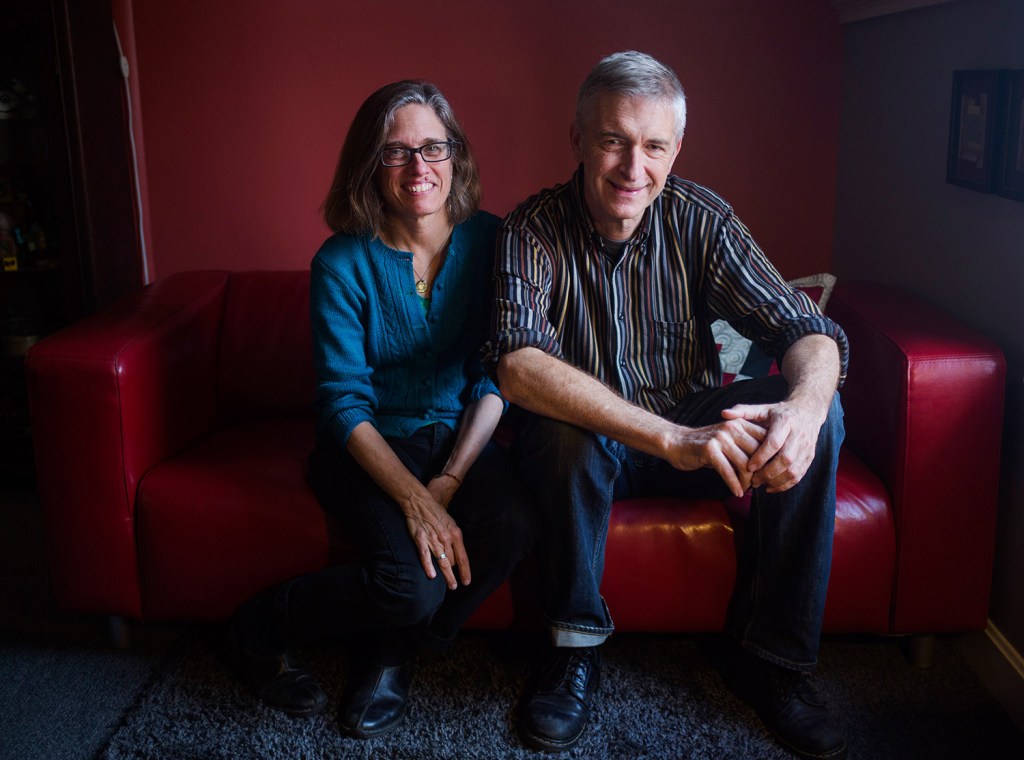
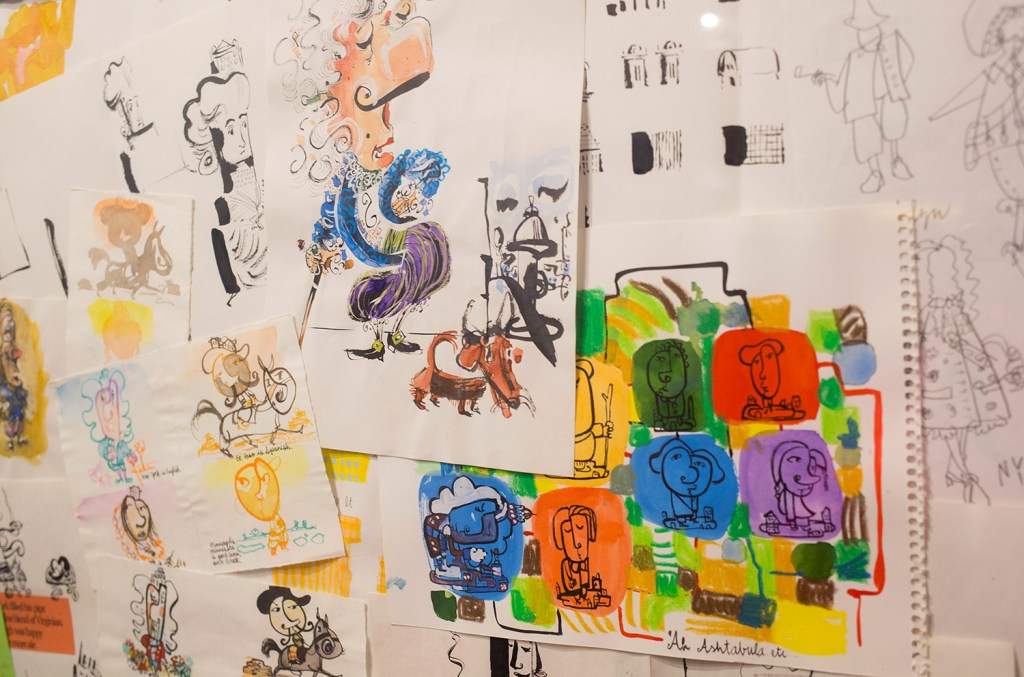

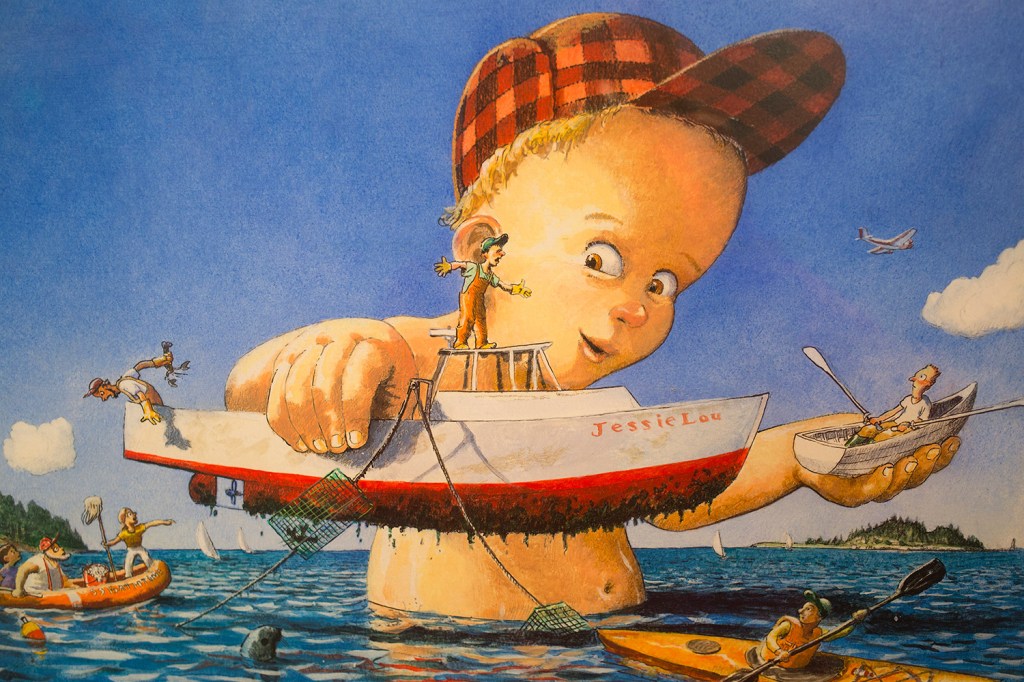
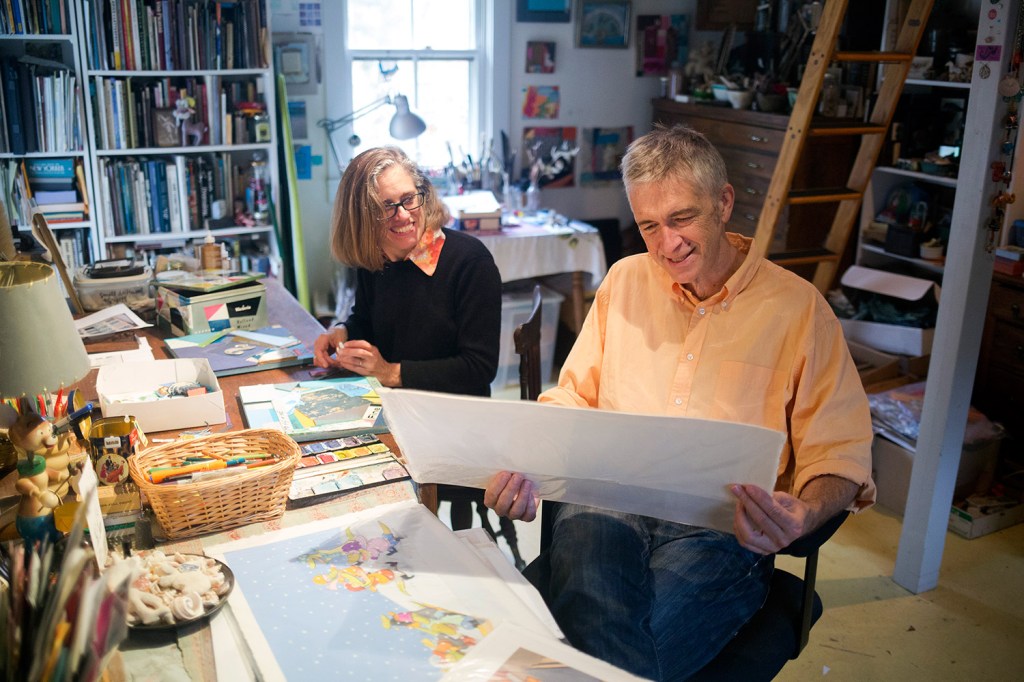
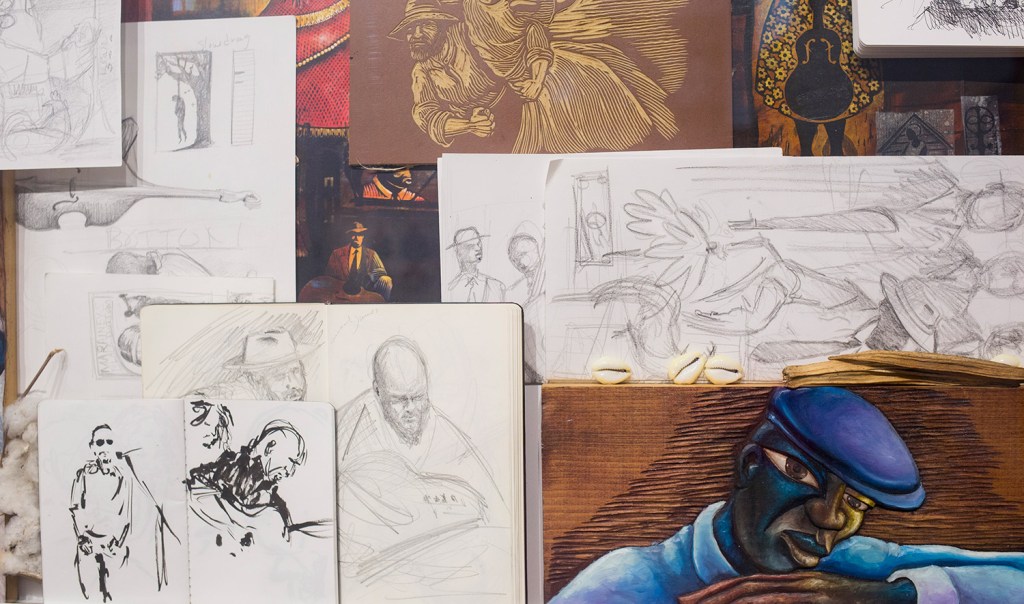
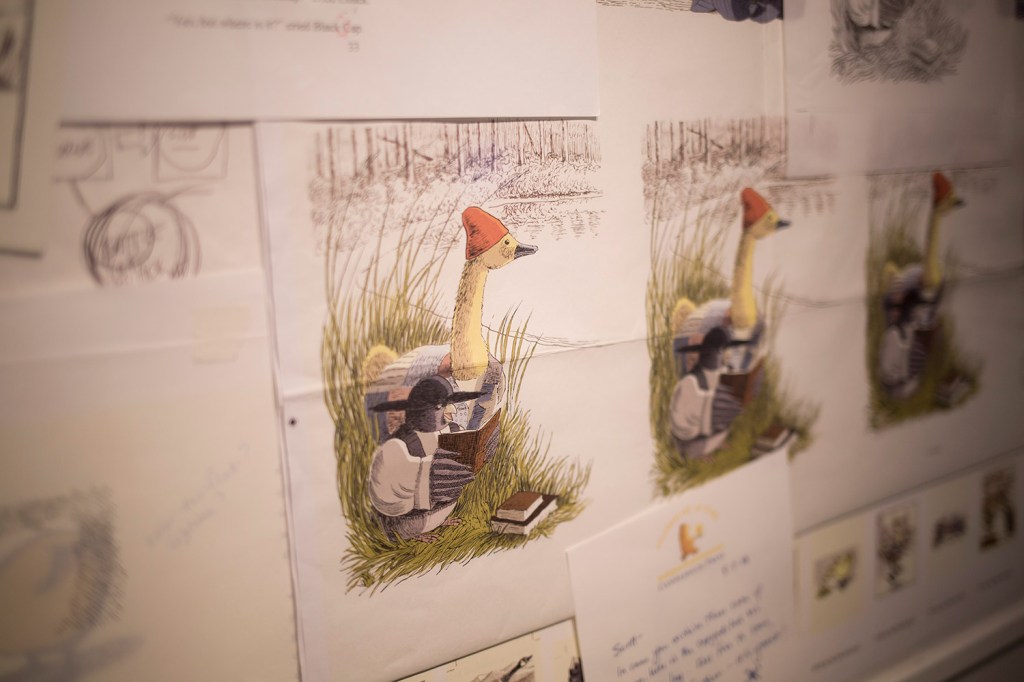


Success. Please wait for the page to reload. If the page does not reload within 5 seconds, please refresh the page.
Enter your email and password to access comments.
Hi, to comment on stories you must . This profile is in addition to your subscription and website login.
Already have a commenting profile? .
Invalid username/password.
Please check your email to confirm and complete your registration.
Only subscribers are eligible to post comments. Please subscribe or login first for digital access. Here’s why.
Use the form below to reset your password. When you've submitted your account email, we will send an email with a reset code.